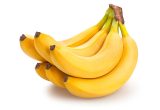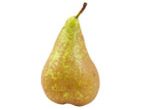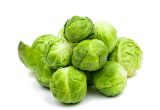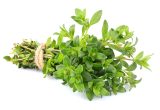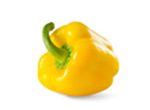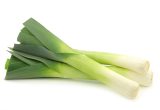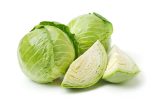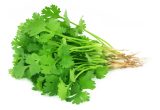Grapes (white)

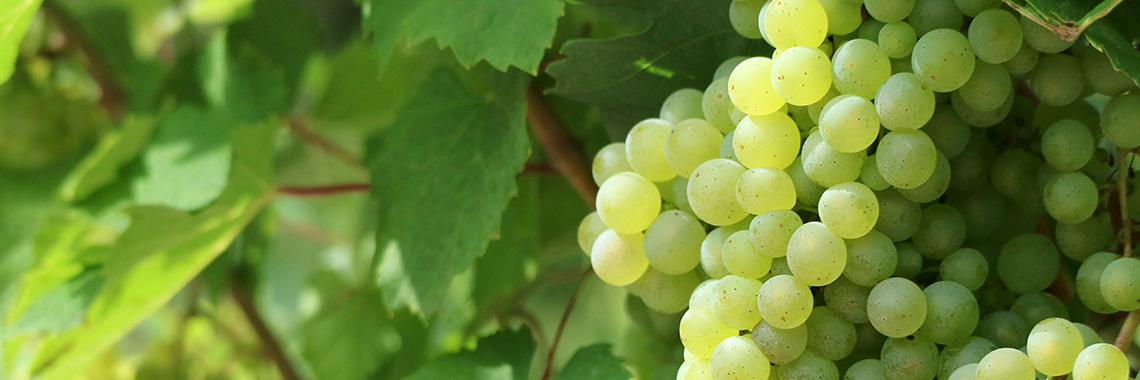
Description
- The grape (Vitis vinifera) belongs to the Vitaceae family.
- With an estimated global area of over 7 million hectares, it is one of the most widely grown fruits in the world (FAOSTAT, 2019).
PHYSICAL AND ORGANOLEPTIC CHARACTERISTICS
- Grapes are rich in polyphenols (Perestrelo, 2014; Rodriguez-Casado, 2016; Xia, 2010). These play an important role in the quality of the grape especially because of their contribution to its colour and taste.
- White grapes owe their golden yellow colour to the presence of flavonols, yellow colour pigments, but mostly to the absence of anthocyanins (Ferreira, 2016).
- Flavonols and flavanols also contribute to the astringency and bitterness of grapes (Drewnowski, 2000).
- The firmness of the fruit decreases with ripening. This change is partly due to a change in sugar composition at the cell wall level. (Zepeda, 2018).
COMPOSITION CHARACTERISTICS (excluding macronutrients, vitamins and minerals)
- Due to their high levels of phytomicronutrients (carotenoids, polyphenols, etc.), many studies have shown that regular consumption of grapes is linked to a reduced risk of developing chronic diseases, including some types of cancer and cardiovascular diseases (Iriti, 2009; Yang, 2013; Costa, 2017).
- Polyphenol composition of white grapes:
- The majority polyphenols are flavonols, followed by flavan-3-ols and phenolic acids (hydroxycinnamic acids and hydroxybenzoic acids) (González-Centeno, 2013; Aubert, 2018). If polyphenolic compounds are generally present in the skin of grapes, hydroxycinnamic acids are mainly located in the pulp and flavan-3-ols in the seeds (Cheynier, 1986; Farhadi, 2016).
- White grapes also contain stilbenes. In particular, trans-resveratrol and its glycoside, piceid, which are compounds well known for their biological health effects due to their antioxidant, anticarcinogenic and antitumor properties, among others (Perestrelo, 2014; Shahidi, 2015; Xia, 2010).
- White grapes generally contain less trans-resveratrol than black grapes (Gatto, 2008; Aubert, 2018).
White grapes also contain carotenoids, the most abundant of which are β-carotene and lutein (Bunea, 2012; Gutiérrez-Gamboa, 2018; Aubert, 2018).
RAW
The following values are approximate and depend on variety, season, ripeness, cultivation conditions, etc. Chasselas white grapes provide an average of 79.10 calories (kcal) per 100 g, i.e. 335 kJ. One grape seed weighs an average of 4 g, which represents 3.16 calories (kcal), while one bunch weighs an average of 320 g, which represents 253.12 calories (kcal).
COMPOSITION TABLES For each nutrient, the tables provide information on the content, minimum and maximum values, as well as the percentage of the Dietary Reference Values (DRVs) per 100 g net of Chasselas white grapes.
Given the composition of the Chasselas white grape, it is not possible to use nutrition and health claims as defined in Regulation (EU) No 1924/2006. In fact, 100 g of Chasselas white grapes do not provide the equivalent of 15% minimum of DRVs for vitamins and minerals.
MACRONUTRIENTS
| Constituent (g) | Average content |
Min-Max per 100g |
DRV% |
|---|---|---|---|
| Water | 79,4 | - | - |
| Fibers | 2 | - | - |
| Carbohydrates | 16,90 | 0 - NC | 6,50 |
| Sugars | 16,50 | - | 18,33 |
| Lipids | 0,50 | - | 0,71 |
| Saturated fat | 0,12 | - | 0,60 |
| Protein | 0,75 | - | 1,50 |
| Constituent (g) | Amount | Min-Max | DRV% |
|---|---|---|---|
| Water | Ciqual 2020 (valeur issue des analyses Ciqual-Aprifel 2017) | - | - |
| Fibers | Ciqual 2020 (valeur issue des analyses Ciqual-Aprifel 2017) | - | - |
| Carbohydrates | Ciqual 2020 | - | Règlement (UE) N°1169/2011 du parlement Européen, et du conseil du 25 octobre 2011 |
| Sugars | Ciqual 2020 (valeur issue des analyses Ciqual-Aprifel 2017) | - | Règlement (UE) N°1169/2011 du parlement Européen, et du conseil du 25 octobre 2011 |
| Lipids | Ciqual 2020 (valeur issue des analyses Ciqual-Aprifel 2017) | - | Règlement (UE) N°1169/2011 du parlement Européen, et du conseil du 25 octobre 2011 |
| Saturated fat | Ciqual 2020 (valeur issue des analyses Ciqual-Aprifel 2017) | - | Règlement (UE) N°1169/2011 du parlement Européen, et du conseil du 25 octobre 2011 |
| Protein | Ciqual 2020 | - | Règlement (UE) N°1169/2011 du parlement Européen, et du conseil du 25 octobre 2011 |
Zoom on carbohydrates
- The energy of the white grape comes mainly from its carbohydrates, at 16.90 g per 100 g.
- This amount is higher than the average quantity found in fresh fruit (11.31 g per 100 g).
- These are mainly fructose (8.40 g per 100 g) and glucose (8.10 g per 100 g).
Zoom on fibres
- White grapes contain a significant amount of fibre (2 g per 100 g), close to the average quantity found in fresh fruit (2.77 g per 100 g).
Zoom on proteins
- Their protein content (0.75 g per 100 g) is lower than the average amount found in fresh fruit (0.93 g per 100 g).
Zoom on lipids
- White grapes are fat-free* as they do not contain more than 0.5 g of fat per 100 g.
- Their fat content (0.50 g per 100 g) is almost identical to the average amount found in fresh fruit (0.56 g per 100 g).
* Regulation (EC) No 1924/2006 of the European Parliament and of the Council of 20 December 2006 on nutrition and health claims made on foods.
MINERALS AND TRACE ELEMENTS
| Constituent | Average content |
Min-Max per 100g |
DRV% |
|---|---|---|---|
| Calcium (mg) | 16 | - | 2 |
| Chloride (mg) | < 20 | - | - |
| Copper (mg) | 0,08 | - | 8 |
| Iron (mg) | 0,14 | - | 1 |
| Iodine (µg) | < 20 | - | - |
| Magnesium (mg) | 7,50 | - | 2 |
| Manganese (mg) | 0,07 | - | 3,50 |
| Phosphorus (mg) | 21 | - | 3 |
| Potassium (mg) | 150 | - | 7,50 |
| Selenium (µg) | < 20 | - | - |
| Sodium (mg) | < 5 | - | - |
| Zinc (mg) | 0,07 | - | 0,70 |
| Constituent | Amount | Min-Max | DRV% |
|---|---|---|---|
| Calcium (mg) | Ciqual 2020 (valeur issue des analyses Ciqual-Aprifel 2017) | - | Règlement (UE) N°1169/2011 du parlement Européen, et du conseil du 25 octobre 2011 |
| Chloride (mg) | Ciqual 2020 (valeur issue des analyses Ciqual-Aprifel 2017) | - | Règlement (UE) N°1169/2011 du parlement Européen, et du conseil du 25 octobre 2011 |
| Copper (mg) | Ciqual 2020 (valeur issue des analyses Ciqual-Aprifel 2017) | - | Règlement (UE) N°1169/2011 du parlement Européen, et du conseil du 25 octobre 2011 |
| Iron (mg) | Ciqual 2020 (valeur issue des analyses Ciqual-Aprifel 2017) | - | Règlement (UE) N°1169/2011 du parlement Européen, et du conseil du 25 octobre 2011 |
| Iodine (µg) | Ciqual 2020 (valeur issue des analyses Ciqual-Aprifel 2017) | - | Règlement (UE) N°1169/2011 du parlement Européen, et du conseil du 25 octobre 2011 |
| Magnesium (mg) | Ciqual 2020 (valeur issue des analyses Ciqual-Aprifel 2017) | - | Règlement (UE) N°1169/2011 du parlement Européen, et du conseil du 25 octobre 2011 |
| Manganese (mg) | Ciqual 2020 (valeur issue des analyses Ciqual-Aprifel 2017) | - | Règlement (UE) N°1169/2011 du parlement Européen, et du conseil du 25 octobre 2011 |
| Phosphorus (mg) | Ciqual 2020 (valeur issue des analyses Ciqual-Aprifel 2017) | - | Règlement (UE) N°1169/2011 du parlement Européen, et du conseil du 25 octobre 2011 |
| Potassium (mg) | Ciqual 2020 (valeur issue des analyses Ciqual-Aprifel 2017) | - | Règlement (UE) N°1169/2011 du parlement Européen, et du conseil du 25 octobre 2011 |
| Selenium (µg) | Ciqual 2020 (valeur issue des analyses Ciqual-Aprifel 2017) | - | Règlement (UE) N°1169/2011 du parlement Européen, et du conseil du 25 octobre 2011 |
| Sodium (mg) | Ciqual 2020 (valeur issue des analyses Ciqual-Aprifel 2017) | - | - |
| Zinc (mg) | Ciqual 2020 (valeur issue des analyses Ciqual-Aprifel 2017) | - | Règlement (UE) N°1169/2011 du parlement Européen, et du conseil du 25 octobre 2011 |
Zoom on minerals and trace elements
- White grapes provide the equivalent of:
- 8% of DRVs for copper, i.e. 0.08 mg per 100 g;
- 7.50% of DRVs for potassium, i.e. 150 mg per 100 g.
VITAMINS
| Constituent | Average content |
Min-Max per 100g |
DRV% |
|---|---|---|---|
| Provitamin A Beta-carotene (µg) | 27,40 | - | - |
| Vitamin A equivalent (µg) | 4,57 | - | 0,57 |
| Vitamin B1 (mg) | 0,031 | - | 2,82 |
| Vitamin B2 (mg) | 0,056 | - | 4 |
| Vitamin B3 (mg) | < 0,10 | - | - |
| Vitamin B5 (mg) | 0,10 | - | 1,67 |
| Vitamin B6 (mg) | 0,054 | - | 3,86 |
| Vitamin B9 (µg) | 8,34 | - | 4,17 |
| Vitamin C (mg) | 4,14 | - | 5,18 |
| Vitamin E (mg) | 0,35 | - | 2,92 |
| Vitamin K1 (µg) | 2,18 | - | 2,91 |
| Constituent | Amount | Min-Max | DRV% |
|---|---|---|---|
| Provitamin A Beta-carotene (µg) | Ciqual 2020 (valeur issue des analyses Ciqual-Aprifel 2017) | - | - |
| Vitamin A equivalent (µg) | Calcul à partir de la valeur Provitamine A Béta-carotène* | - | Règlement (UE) N°1169/2011 du parlement Européen, et du conseil du 25 octobre 2011 |
| Vitamin B1 (mg) | Ciqual 2020 (valeur issue des analyses Ciqual-Aprifel 2017) | - | Règlement (UE) N°1169/2011 du parlement Européen, et du conseil du 25 octobre 2011 |
| Vitamin B2 (mg) | Ciqual 2020 (valeur issue des analyses Ciqual-Aprifel 2017) | - | Règlement (UE) N°1169/2011 du parlement Européen, et du conseil du 25 octobre 2011 |
| Vitamin B3 (mg) | Ciqual 2020 (valeur issue des analyses Ciqual-Aprifel 2017) | - | Règlement (UE) N°1169/2011 du parlement Européen, et du conseil du 25 octobre 2011 |
| Vitamin B5 (mg) | Ciqual 2020 (valeur issue des analyses Ciqual-Aprifel 2017) | - | Règlement (UE) N°1169/2011 du parlement Européen, et du conseil du 25 octobre 2011 |
| Vitamin B6 (mg) | Ciqual 2020 (valeur issue des analyses Ciqual-Aprifel 2017) | - | Règlement (UE) N°1169/2011 du parlement Européen, et du conseil du 25 octobre 2011 |
| Vitamin B9 (µg) | Ciqual 2020 (valeur issue des analyses Ciqual-Aprifel 2017) | - | Règlement (UE) N°1169/2011 du parlement Européen, et du conseil du 25 octobre 2011 |
| Vitamin C (mg) | Ciqual 2020 (valeur issue des analyses Ciqual-Aprifel 2017) | - | Règlement (UE) N°1169/2011 du parlement Européen, et du conseil du 25 octobre 2011 |
| Vitamin E (mg) | Ciqual 2020 (valeur issue des analyses Ciqual-Aprifel 2017) | - | Règlement (UE) N°1169/2011 du parlement Européen, et du conseil du 25 octobre 2011 |
| Vitamin K1 (µg) | Ciqual 2020 (valeur issue des analyses Ciqual-Aprifel 2017) | - | Règlement (UE) N°1169/2011 du parlement Européen, et du conseil du 25 octobre 2011 |
Zoom on vitamins
- White grapes provide the equivalent of 5.18% of the DRVs for vitamin C, i.e. 4.14 mg per 100 g.
- The quantity of other vitamins represents less than 5% of DRVs.
*Calculation made: Beta Carotene / 6 + retinol
POLYPHENOLS
| Constituent (mg) | Average content |
Min-Max per 100mg |
|---|---|---|
| Flavonoids (mg) | 28,85 | - |
| of which Flavonols (mg) | 8,65 | - |
| of which Flavanols (mg) | 20,20 | - |
| Phenolic Acids (mg) | 11,33 | - |
| of which Hydroxycinnamic acids (mg) | 11,33 | - |
| Stilbenes (mg) | 0,012 | - |
| Total polyphenols | 40,19 | - |
| Constituent (mg) | Amount | Min-Max |
|---|---|---|
| Flavonoids | Etude CTIFL-Aprifel 2017-2018 Méthode utilisée : chromatographie | - |
| of which Flavonols | Etude CTIFL-Aprifel 2017-2018 Méthode utilisée : chromatographie | - |
| of which Flavanols | Etude CTIFL-Aprifel 2017-2018 Méthode utilisée : chromatographie | - |
| Phenolic Acids | Etude CTIFL-Aprifel 2017-2018 Méthode utilisée : chromatographie | - |
| of which Hydroxycinnamic acids | Etude CTIFL-Aprifel 2017-2018 Méthode utilisée : chromatographie | - |
| Stilbenes | Etude CTIFL-Aprifel 2017-2018 Méthode utilisée : chromatographie | - |
| Total polyphenols | Etude CTIFL-Aprifel 2017-2018 Méthode utilisée : chromatographie | - |
Zoom on polyphenols
- Polyphenols are substances with an antioxidant effect.
- Flavanols, a subgroup of flavonoids, are predominantly present in white grape composites, representing about 50.25% of the total polyphenols identified.
- Next come hydroxycinnamic acids (subgroup of phenolic acids) and flavonols (subgroup of flavonoids), accounting for 28.20% and 21.53% of total polyphenols, respectively.
Nutrition and health claims
According to the definitions of nutrition claims as set out in Regulation (EC) No 1924/2006 on nutrition and health claims, and in view of the composition of the Chasselas white grape, the following claim may be used:
Nutrition claim of Chasselas white grapes:
- Fat-free (100 g of white grapes contain less than 0.5 g of fat)
References
- Agence nationale de sécurité sanitaire de l’alimentation, de l’environnement et du travail. Table de composition nutritionnelle des aliments Ciqual 2020. Consultée le 10/09/2020 depuis le site internet Ciqual https://ciqual.anses.fr/
- Aubert, C., & Chalot, G. Chemical composition, bioactive compounds, and volatiles of six table grape varieties (Vitis vinifera L.). Food chemistry. 2018;240:524-33.
- Bunea, CI., Pop, N., Babeş, AC., Matea, C., Dulf, FV., & Bunea, A. Carotenoids, total polyphenols and antioxidant activity of grapes (Vitis vinifera) cultivated in organic and conventional systems. Chemistry Central Journal. 2012;6(1):66.
- Cheynier, V., & Rigaud, J. HPLC separation and characterization of flavonols in the skins of Vitis vinifera var. Cinsault. American Journal of Enology and Viticulture, 1986;37(4):248–52.
- Costa C, Tsatsakis A, Mamoulakis C, Teodoro M, Briguglio G, Caruso E, Tsoukalas D, Margina D, Dardiotis E, Kouretas D, Fenga C. Current evidence on the effect of dietary polyphenols intake on chronic diseases. Food Chem Toxicol. 2017;110:286-99.
- Drewnowski, A., & Gomez-Carneros, C. Bitter taste, phytonutrients, and the consumer: a review. The American Journal of Clinical Nutrition, 2000;72(6):1424–35.
- FAOSTAT (2019). Food and Agriculture Organization of the United Nations [en ligne]. [consulté le 20/05/2020]. Disponible à l’adresse : http://www.fao.org/faostat/en/#home.
- Farhadi K, Esmaeilzadeh F, Hatami M, Forough M, Molaie R. Determination of phenolic compounds content and antioxidant activity in skin, pulp, seed, cane and leaf of five native grape cultivars in West Azerbaijan province, Iran. Food Chemistry; 2016;199:847–55.
- Ferreira V, Fernandes F, Pinto-Carnide O, Valentão P, Falco V, Martín JP, Castro, I. Identification of Vitis vinifera L. grape berry skin color mutants and polyphenolic profile. Food Chemistry. 2016;194:117-27.
- Gatto, P.; Vrhovsek, U.; Muth, J.; Segala, C.; Romualdi, C.; Fontana, P.; Pruefer, D.; Stefanini, M.; Moser, C.; Mattivi, F.; et al. Ripening and genotype control stilbene accumulation in healthy grapes. J. Agric. Food Chem. 2008;56:11773–85.
- González-Centeno, MR., Jourdes, M., Femenia, A., Simal, S., Rosselló, C., & Teissedre, PL. Characterization of polyphenols and antioxidant potential of white grape pomace byproducts (Vitis vinifera L.). Journal of agricultural and food chemistry. 2013 ; 61(47):11579-87.
- Gutiérrez-Gamboa G, Marín-San Román S, Jofré V, Rubio-Bretón P, Pérez-Álvarez EP, Garde-Cerdán T. Effects on chlorophyll and carotenoid contents in different grape varieties (Vitis vinifera L.) after nitrogen and elicitor foliar applications to the vineyard. Food Chem. 2018;269:380-6.
- Iriti, M., & Faoro, F. Bioactivity of grape chemicals for human health. Natural Product Communications. 2009;4(5), 1934578X0900400502.
- Perestrelo, R., Silva, C., Pereira, J., & Câmara, J.S. (2014). Healthy Effects of Bioactive Metabolites from Vitis vinifera L. Grapes: A Review. In Grapes: Production, Phenolic Composition and Potential Biomedical Effects (Nova Science Technology, pp. 305–338. José S. Câmara.
- Règlement (CE) N° 1924/2006 du Parlement européen et du Conseil du 20 décembre 2006 concernant les allégations nutritionnelles et de santé portant sur les denrées alimentaires.
- Règlement (UE) N°432/2012 de la Commission du 16 mai 2012 établissant une liste des allégations de santé autorisées portant sur les denrées alimentaires, autres que celles faisant référence à la réduction du risque de maladie ainsi qu’au développement et à la santé infantiles.
- Règlement (UE) n°1169/2011 du Parlement européen et du Conseil du 25 octobre 2011 concernant l’information des consommateurs sur les denrées alimentaires, modifiant les règlements (CE) n°1924/2006 et (CE) n°1925/2006 du Parlement européen et de Conseil et abrogeant la directive 87/250/CEE de la Commission, la directive 90/496/CEE du Conseil, la directive 1999/10/CE de la Commission, la directive 200/13/CE du Parlement européen et du Conseil, les directives 2002/67/CE et 2008/5/CE de la Commission et le règlement (CE) n°608/2004 de la Commission.
- Rodriguez-Casado, A. The health potential of fruits and vegetables phytochemicals: notable examples. Critical Reviews in Food Science and Nutrition. 2016; 56(7):1097–107.
- Shahidi, F., & Ambigaipalan, P. Phenolics and polyphenolics in foods, beverages and spices: Antioxidant activity and health effects– A review. Journal of Functional Foods. 2015;18:820–97.
- Xia, E-Q., Deng, G-F., Guo, Y-J., & Li, H-B. . Biological activities of polyphenols from grapes. International Journal of Molecular Sciences. 2010; 11(2):622–46.
- Yang, J. & Xiao, Y.Y. (2013). Grape phytochemicals and associated health benefits. Critical reviews in food science and nutrition. 2013; 53(11):1202-25.
- Zepeda B, Olmedo P, Ejsmentewicz T, Sepúlveda P, Balic I, Balladares C, Campos-Vargas R. Cell wall and metabolite composition of berries of Vitis vinifera (L.) cv. Thompson Seedless with different firmness. Food Chemistry. 2018 ;268 :492–7




